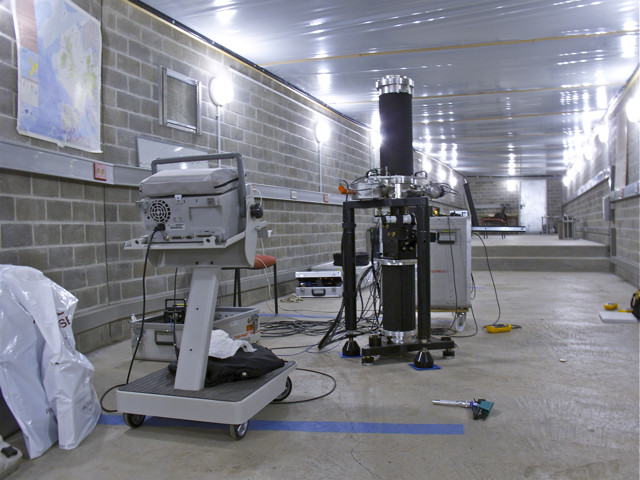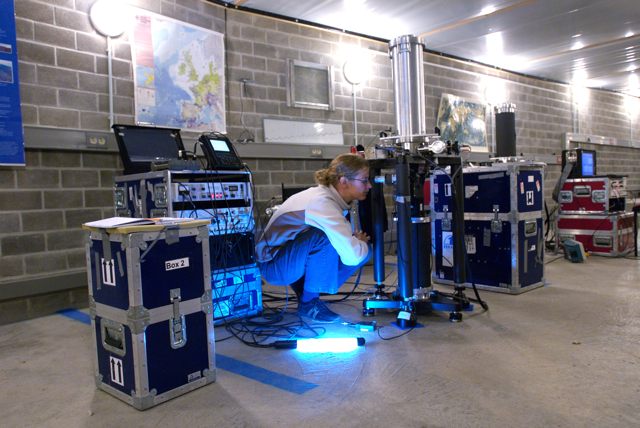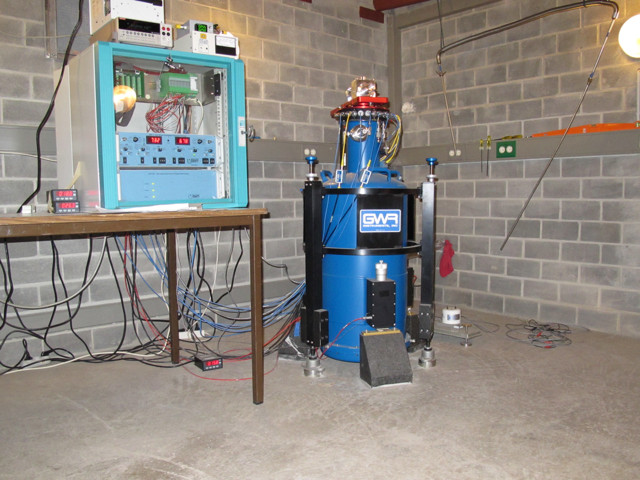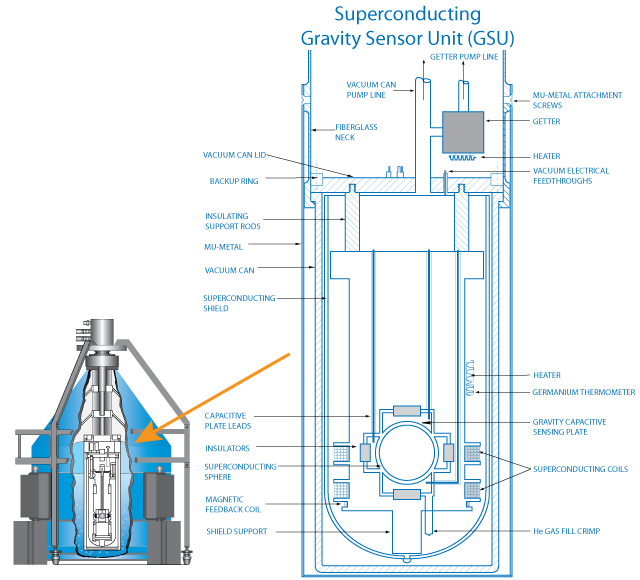Gravimeters
Introduction
Gravimeters are instruments to measure the the Earth’s gravity (g) which is a function of the
geographic position of the observation site and a function of time as well.
A distinction is drawn between Absolute Gravimeters, which measure the local and
instantaneous gravity, and Relative Gravimeters, measuring local variations of gravity in time
or gravity differences between observation sites.
The major time depending gravity effects in an observation site are the periodic earth tides
caused by the gravitational attraction of sun and moon which changes due to the Earth’s
rotation and the revolution of sun and moon.
The present state-of-the-art allows for a signal resolution up to 0.00001ppm (parts per
million); for illustration: this corresponds 0.1mm in relation to the distance of 10 000km from
the equator to the earth pole.
Why determine gravity g ?
In Geophysics we determine gravity g for:
- Determination of the Geoid (represents the mean sea level of the oceans and the extrapolation of this surface under the continents)
- Tectonics & Post-glacial rebound
- Influence of atmosphere, cryosphere & hydrosphere on the Earth
- Structure of the Earth’s interior
- Geology & mineral resource exploration
In Metrology we determine g for
- Calibration of relative gravimeters
- Force standards: e.g. pressure transducers
- Watt balance: to relate the kilogram to a natural constant
The Absolute Gravimeter FG5
The absolute gravimeter FG5 is installed in the Walferdange Underground Laboratory.
The FG5 operates by using the free-fall method. An object is dropped inside a vacuum chamber (called the dropping chamber). The descent of the freely-falling object is monitored very accurately using a laser interferometer. The free-fall trajectory of the dropped object is referenced to a very stable active-spring system called a Superspring. The Superspring provides seismic-isolation for the reference optic to improve the noise performance of the FG5.
The optical fringes generated in the interferometer provide a very accurate distance measuremen t system that can be traced to absolute wavelength standards. Very accurate and precise timing of the occurence of these optical fringes is done using an atomic rubidium clock that is also referenced to absolute standards.
The fact that the measurement is directly tied to absolute standards kept at all of the national and international laboratories around the world is the reason why the FG5 is an ABSOLUTE GRAVIMETER. Absolute standards of length and time provide the means to achieve a calibrated gravity value that does not drift over time.
To get more information please visit Micro-g Solutions Inc.


The Superconducting Gravimeter GWR
The Superconducting Gravimeter (SG) is installed in the Walferdange Underground Laboratory to measure gravity g at very high resolution. The SG uses persistent supercurrents, which are trapped in superconducting magnets, to produce an ultra-stable magnetic field which levitates a superconducting test mass (sphere). The magnetic field is generated by persistent currents in two niobium coils that are superconducting below a temperature of 9.3 K (or -263.85 ° Celsius)
The GWR Superconducting Gravimeter records gravity changes due to the deformation of the Earth from tidal forcing, tidal loading, atmospheric pressure loading, and seasonal changes in water storage.
Changes in gravity result from changes in the Earth’s mass and or vertical deformations of the Earth’s crust.
What do we learn about the Earth from these observations? The amplitude of the tides tells us about what the Earth is made of and how the tides of the ocean circulate. We learn how continental water moves around the planet and learn about climate change (how ice mass varies with time).
Data is acquired by ECGS developed data acquisition systems and remotely transfered to our office.
For more information on principles and product infos, please visit GWR Instruments Inc., USA webpage

Superconducting Gravimeter’s Gravity Sensor Unit (GSU)
Principle of operation
A magnetic field produced by two superconducting coils levitates a 2.54 cm diameter spherical proof mass weighing 4-8 grams. The sphere tries to move up or down in response to changes in gravity. A voltage is applied to keep the sphere at it’s equilibrium position. This voltage is proportional to changes in gravity.

 Back to the WULG Introduction page
Back to the WULG Introduction page